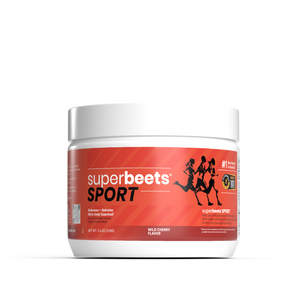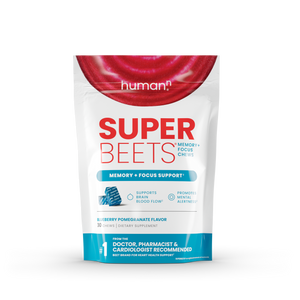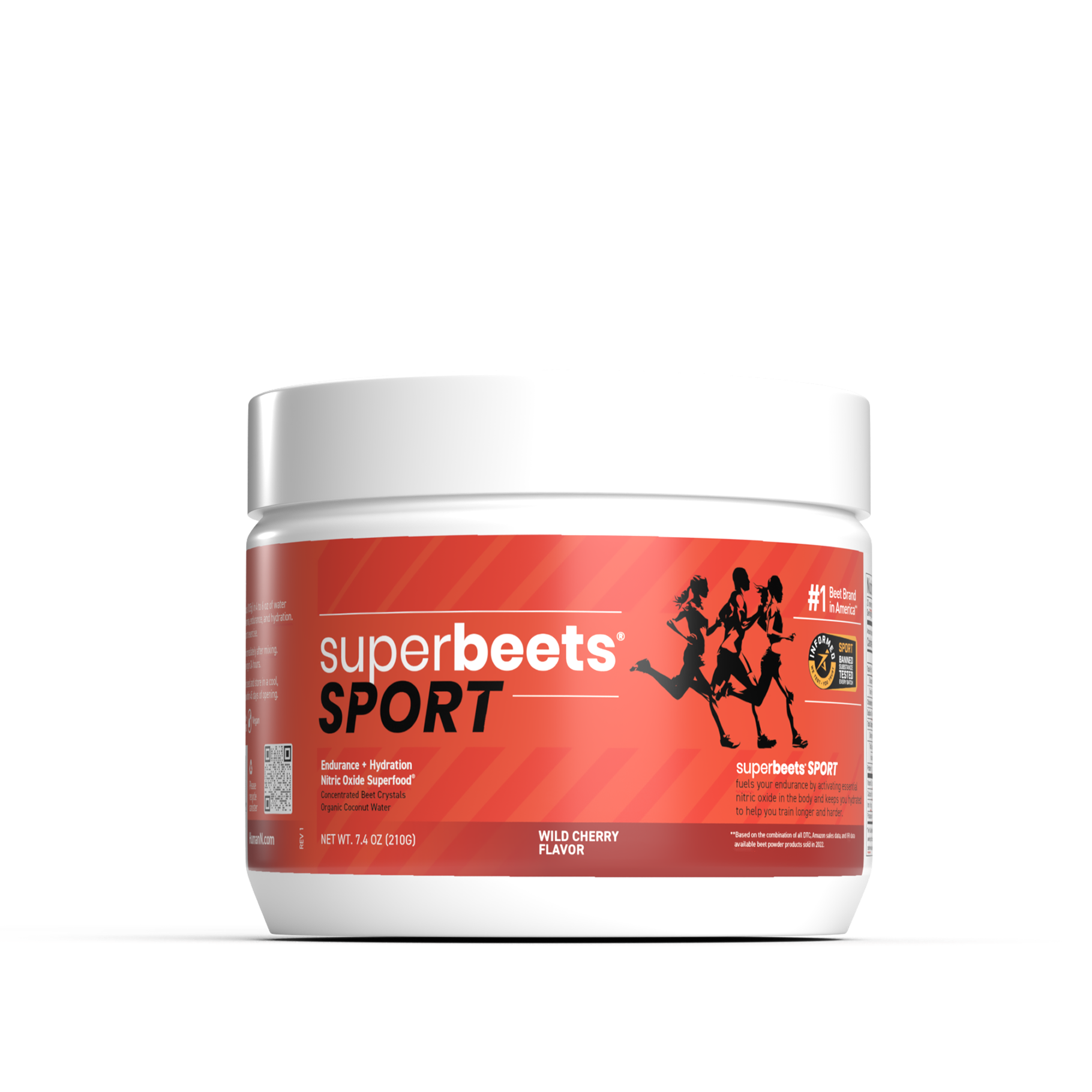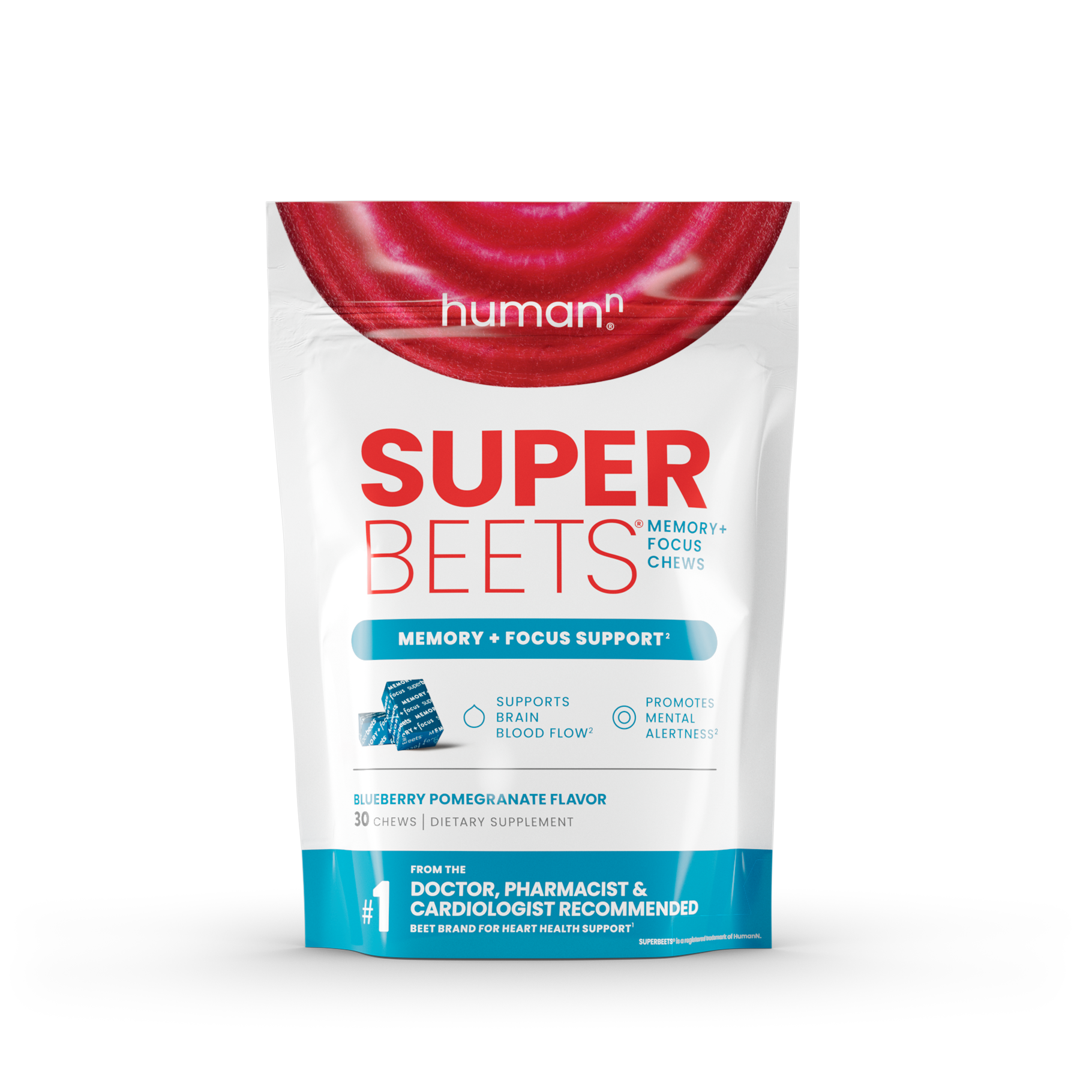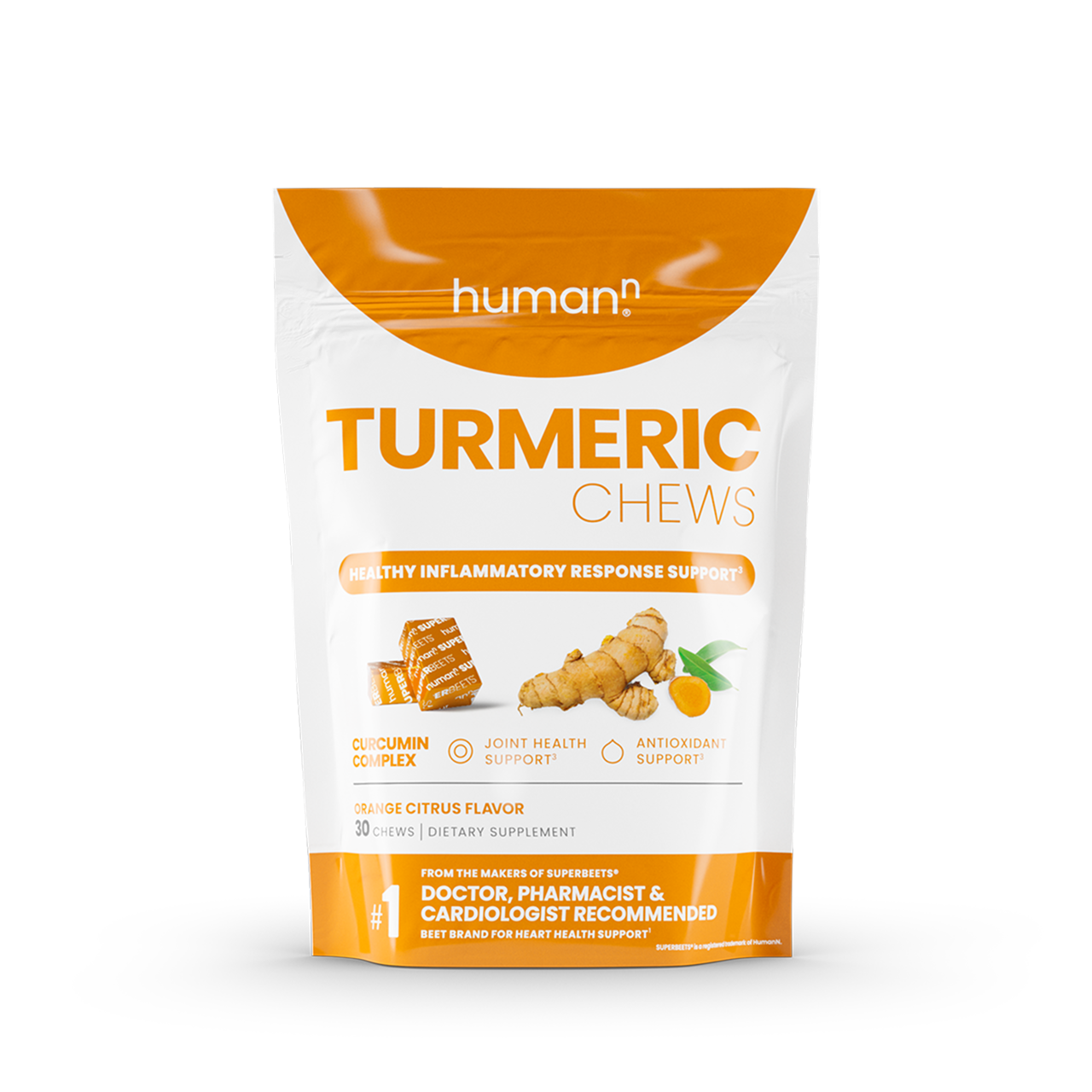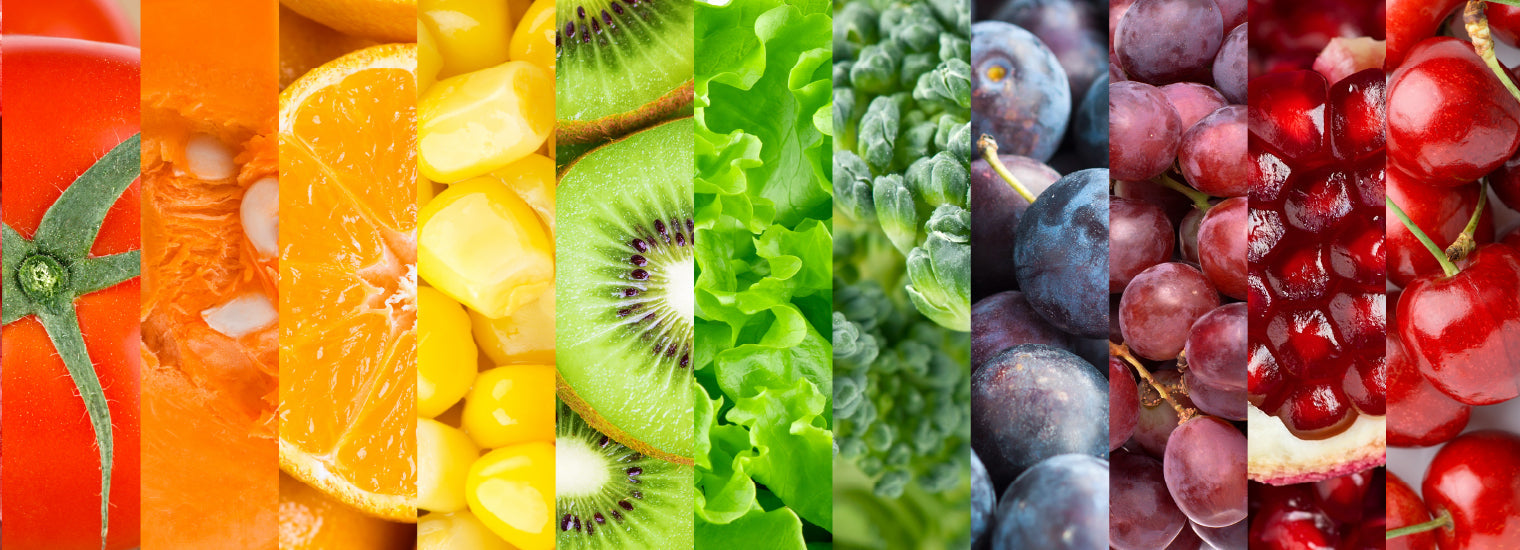As more research emerges on the importance of nitric oxide foods, it’s clear that your diet is the number one most effective way to increase nitric oxide (oxido nitrico).
One nutrient plays an important role in many recommended vegetables from popular diets — dietary nitrate. Your body needs dietary nitrates to create nitric oxide (NO), which is essential for heart health. Nitric oxide is so important that, in 1998, the Nobel prize for medicine was awarded to the 3 scientists who discovered its drastic effects on cardiovascular health.
In this article, we’ll explain why nitric oxide is essential for your health, outline the best sources of dietary nitrate, and show you how to include them in your daily diet. We’ll even share some of our favorite nitrate-rich recipes.
Nitric Oxide: The Key to Better Blood Flow
Nitric oxide (oxido nitrico) is one of the most important molecules that your body produces naturally. It’s vital to your health, as it impacts a wide range of essential processes. Its most important function is vasodilation. That means it helps the inner muscles of your blood vessels to relax and widen, enabling your blood to move freely, delivering oxygen and nutrients to your whole body more efficiently.
By helping blood vessels to dilate, NO promotes healthy blood flow, which may have many health benefits — including lower blood pressure, better brain function, and improved athletic performance. [1] As you age (starting around age 40), the body naturally begins to produce less nitric oxide. The nitric oxide you produced in your twenties could be lowered by half or more in your 50, 60s, and beyond. If you can’t produce enough NO, you may have increased risk of serious health conditions, such as heart problems, diabetes, and erectile dysfunction.
And one of the best ways to promote healthy NO is to consume dietary nitrates.
What are Dietary Nitrates?
The best nitric oxide foods are the most abundant in dietary nitrates. These are nutrients that are found in a range of foods and supplements. Your body uses them in the production of nitric oxide.
Plant nitrates should not be confused with animal or sodium nitrates which are a form found in processed meats, such as bacon and hot dogs. Sodium nitrates are converted by the body into nitrosamines, which may be harmful and have been linked to bowel cancer. [2]
In contrast, plant nitrates are beneficial, may contain vitamin C, and can prevent the formation of nitrosamines. [3,4]
Nitric Oxide Health Benefits
Over 160,000 scientific articles have been published about various aspects of nitric oxide. [5]
The results of many of these studies have suggested that nitric oxide provides a wide range of health benefits, including:
- Increased blood flow — delivering oxygen and other nutrients to your muscles and tissues
- Healthy blood pressure — Studies suggest that increasing NO levels could have similar benefits to blood pressure meds. [6,7]
- Increased energy levels — due to efficient oxygen delivery
- Improved athletic performance — Research suggests combining exercise with a nitrate-rich diet helps boost athletic performance and aid recovery. [8,9]
- Healthy brain function — Nitric oxide acts as a neurotransmitter, potentially impacting learning and memory function. Some studies suggest it can help with age-related brain deterioration. [10,11]
7 Best Nitric Oxide Foods and Supplements (Oxido Nitrico Comidas)
It is possible to boost your nitric oxide levels by eating nitrate-rich foods and plant protein. We pulled together a list of nitrate-rich foods to enhance nitric oxide production.

1. Leafy Greens
The best source of dietary nitrate is, without a doubt, organic leafy vegetables. Studies show eating leafy greens regularly can help maintain enough NO in your blood to help reduce the risk of cardiovascular complications. [12]
Vegetables high in nitrates are also high in antioxidants — which neutralize free radicals depleting NO in the bloodstream. [13] Some of the best leafy greens to eat are:
- Arugula — Arugula is a cruciferous vegetable, similar to broccoli, cauliflower, and cabbage. Out of all vegetables, arugula contains the highest amount of dietary nitrates — 480mg for 100g. Toss it into your next salad and pat yourself on the back for treating your body right.
- Kale — Kale is a rich source of potassium and magnesium. Harvard Medical School highlights these two minerals to be especially important for heart health, but kale’s superfood powers don’t stop there. It also contains a significant amount of dietary nitrate to help with nitric oxide production. Just make sure you lightly steam it to maintain all of its nutrients. [15]
- Spinach — One study suggested that eating a meal packed with spinach can increase the amount of NO in your saliva by eight times and decrease systolic blood pressure. [16] Spinach is also packed with potassium. It helps your body get rid of sodium, a mineral that can negatively impact healthy blood pressure levels.
- Spirulina — In a human research trial, 4.5 grams of spirulina per day was shown to help support healthy blood pressure levels in both men and women. [17] Spirulina has high levels of plant proteins essential for nitric oxide production. It is also chock-full of vitamins, minerals, and chlorophyll — which help protect cells.
- Swiss Chard — With bitter leaves and sweet stems, swiss chard has more to offer than just dynamic flavor. It provides the dietary nitrate necessary to maintain a healthy lifestyle. Try steaming both the leaves and stems before enjoying this power vegetable.
- Cabbage — Cabbage grows in a variety of colors, all offering the nutrients your body needs to make nitric oxide. Additionally, it’s a great source of fiber.
2. Dark chocolate
Eating dark chocolate (search for 70-80% cocoa) is a decadent way to boost nitric oxide levels. Cocoa contains natural compounds called flavonols, which promote increased nitric oxide levels. [18] But how much chocolate should you eat?
The results of one study suggested that 30 grams daily led to increases of NO levels in the blood, plus lowered blood pressure levels. [19] Other studies suggest the flavonols in dark chocolate may help optimize blood flow and brain function and lower the risk of heart disease. [20]
Remember to use high-quality dark chocolate containing 70-80% cocoa. You can also add cacao powder or nibs to your smoothie.
3. Amino acids
Amino acids, such as L-arginine and L-citrulline, are essential in order for your body to be able to produce nitric oxide. The easiest way to include amino acids in your diet is through supplementation.
L-arginine
The amino acid L-arginine, also called arginine, is found in foods such as nuts (particularly walnuts) and seeds. A number of studies found that increasing your intake of L-arginine can help increase the amount of NO in your body. [21]
A small human study involving 8 patients with cystitis had increased NO levels after two weeks of daily L-arginine supplements. [22] However, scientists say that most healthy adults make all the L-arginine they need and should not need to supplement. Some groups of people, however, like pregnant women, may need an L-arginine supplement. [23]
It’s important to note that while 20 milligrams daily is considered safe, some people have side effects including stomach problems, even at lower doses. [24]
L-citrulline
Citrulline, or L-citrulline, is an amino acid that converts to arginine, which, as we have seen, is used in the formation of NO. Your body can produce all the L-citrulline it needs, but a supplement can boost the production of NO faster than an L-arginine supplement — and your body can absorb and use it more effectively.
A small study found that citrulline supplements may help promote NO synthesis within a few hours, but subjects may need to take the supplements for longer to see benefits in blood flow. [25] Some studies show that L-citrulline increases healthy blood flow, improves athletic performance, and promotes healthy blood pressure.[26,27,28] There is a very low risk of side-effects with L-citrulline supplementation. [29]

4. Beets
Beets are one of the best nitric oxide foods you’re likely to find. Beetroot has one of the highest concentrations of dietary nitrate in the plant kingdom. They rank just after leafy greens for nitrate levels. In one study, 38 adults who were given 70 milliliters of beetroot juice were shown to have elevated NO levels 45 and 90 minutes afterward. [30]
Beetroot can be added to smoothies, salads, or even brownies. Beet juice is popular with athletes and bodybuilders as a pre-workout boost. It’s second after arugula for nitrate content, 270 milligrams per 100 grams. Be careful when using beet juice or a beets supplement, as some products have high levels of added sugar. (Pro tip: the less sugar content in your beets supplement, the better.)
5. Citrus Fruits
You probably know that citrus fruits — such as oranges, lemons, and grapefruits — are great sources of vitamin C. Vitamin C is great for your immune system, but this crucial vitamin also increases the bioavailability of NO, which is your body’s ability to absorb and use the molecule. [31]
Some studies suggest that vitamin C might also increase the amount of nitric oxide synthase, an enzyme essential for NO production. [32,33]
By boosting NO levels, citrus fruits may also help lower the risk of high blood pressure and heart disease and help optimize brain function. [34,35,36]
As well as eating citrus fruits whole, or juicing them, try adding the zest to your salad, seafood, or fish dish to boost your intake.
6. Watermelon
Watermelon isn’t just refreshing and hydrating — it’s also a good source of the amino acid L-citrulline that converts to arginine and then is used to produce NO.
A small study in which eight men drank 300ml of watermelon juice daily for two weeks showed increased bioavailability of NO. [37]
A 2017 review suggested increased watermelon intake boosts nitric oxide levels, which may support higher athletic performance and promote healthy blood pressure and blood flow. [38]
Watermelon has also been shown to aid post-workout recovery. [39]

7. Pomegranate
The last nitric oxide food on our list is the heart-healthy pomegranate. The rich red seeds of pomegranates are full of antioxidants that promote the formation of NO and protect it from damage. A test-tube study on pomegranate juice showed that it prevented NO being damaged by oxidative stress. [40]
An animal study suggested that pomegranate helps boost the enzyme nitric oxide synthase and blood nitrate levels — both of which are crucial for the formation of nitric oxide. [41]
Other human and animal studies have suggested that the antioxidants in pomegranates can help blood flow more freely, which may help lower the risk of heart conditions. [42]
3 Recipes to Send Nitric Oxide Levels Soaring

Beet Juice
The advantage of making your own beet juice is you’ll know exactly what it contains. Store-bought juices can be high in sugar and other additives.
What you need:
- 1 beet (large, cut into wedges)
- 1 orange (peeled and quartered)
- Fresh ginger
- Kale leaves
- 1 apple (cut into wedges)
- 1 carrot (peeled)
To make with a juicer:
- Step 1: Add the orange, kale, apple, carrot, beet, and ginger to a juicer and juice until well-blended.
- Step 2: Add ice to two glasses and pour the juice into the glasses. This recipe is served immediately.
To make without a juicer :
- Step 1: Chop all of the ingredients coarsely. Working in this order, place the soft or liquid ingredients into a blender and process until they liquefy into a well-blended mixture.
- Step 2: Add the remaining ingredients and blend until everything is liquefied.
- Step 3: Cut two pieces of cheesecloth, completely unfolding each piece and stacking the pieces onto one another. Fold the cheesecloth stack so that you now have 4 layers of cloth. Put a large bowl under the cheesecloth and place the remaining pulp in the middle of the cloth. Gather the edges and squeeze the pulp to extract all of the juice into the bowl. Tip: to avoid staining your hands, consider using rubber gloves.
Beets Smoothie Bowl
A smoothie bowl is a great way to start the day or to boost your energy at any time. Plus, the handful of spinach may also boost your NO levels.
What you need:
- 1 Handful frozen cranberries
- 1 Handful of raspberries
- 1 Handful of spinach
- 1 large scoop peanut butter
- 1 cup almond milk
- 1 tbs flax
- 1 scoop of beets powder supplement (low in sugar)
Directions:
- Step 1: Combine all ingredients
- Step 2 (optional): Top with homemade granola, more cranberries, cacao nibs, bee pollen, coconut, and sunflower seeds.
- Step 3: Enjoy!
Collagen Beet Truffles
Do you sometimes have a craving for something sweet? Its always handy to have a healthy snack on hand to satisfy a sweet tooth, or an afternoon energy slump that might result in you reaching for a candy bar.
These delicious truffles combine a beets powder with collagen, along with dark chocolate or cacao nibs for an extra NO boosting effect.
What you need:
- 1/2 cup of coconut flour
- 1/4 cup of raw honey
- 3/4 cup of raw cashew butter
- 2 scoops of beets powder plus collagen supplement (or 1 scoop of a beets powder and 1 scoop of powdered collagen peptides)
- 1/2 cup of dark chocolate chips (or cacao nibs)
- 2 tbsp coconut oil
Directions:
- Step 1: Combine everything together in a bowl. Take a tsp or so of the mixture into your hand and roll into a ball. Continue this step until batter is gone and place balls into the freezer for at least 30-45 min.
- Step 2: Melt the chocolate chips over a double broiler. When melted, stir in the coconut oil and let the chocolate cool completely.
- Step 3: Take out the balls and dip them in the chocolate. Place them back into the freezer for another 10 minutes so the chocolate can harden. After 10 minutes drizzle more chocolate over the tops of the truffles (this step is optional) sprinkle fleur de sel finishing salt on each truffle and then finish off with a dust of beets powder.
- Step 4: Store these in the freezer. When you’re ready to eat them, let them thaw for a couple minutes, then enjoy!
The Bottom Line On Nitric Oxide Foods
Scientists agree: Nitric oxide is vital for your long term heart, energy, exercise performance, and brain function.
Boost your levels of nitric oxide naturally by increasing your dietary nitrate intake (not to be confused with dietary nitrites found in processed meats). Foods high in dietary nitrate include leafy greens, dark chocolate, beets, citrus fruits, watermelon, and pomegranates. Increasing physical activity through regular exercise may also help to optimize your NO levels.
Because of modern farming practices, vegetables like beets can vary up to 300% in their dietary nitrate levels, and may even cause them to be nutrient- and vitamin-deficient. This means the beets you buy today and the beets you buy next week may have a different amount of nutrients and dietary nitrate.



